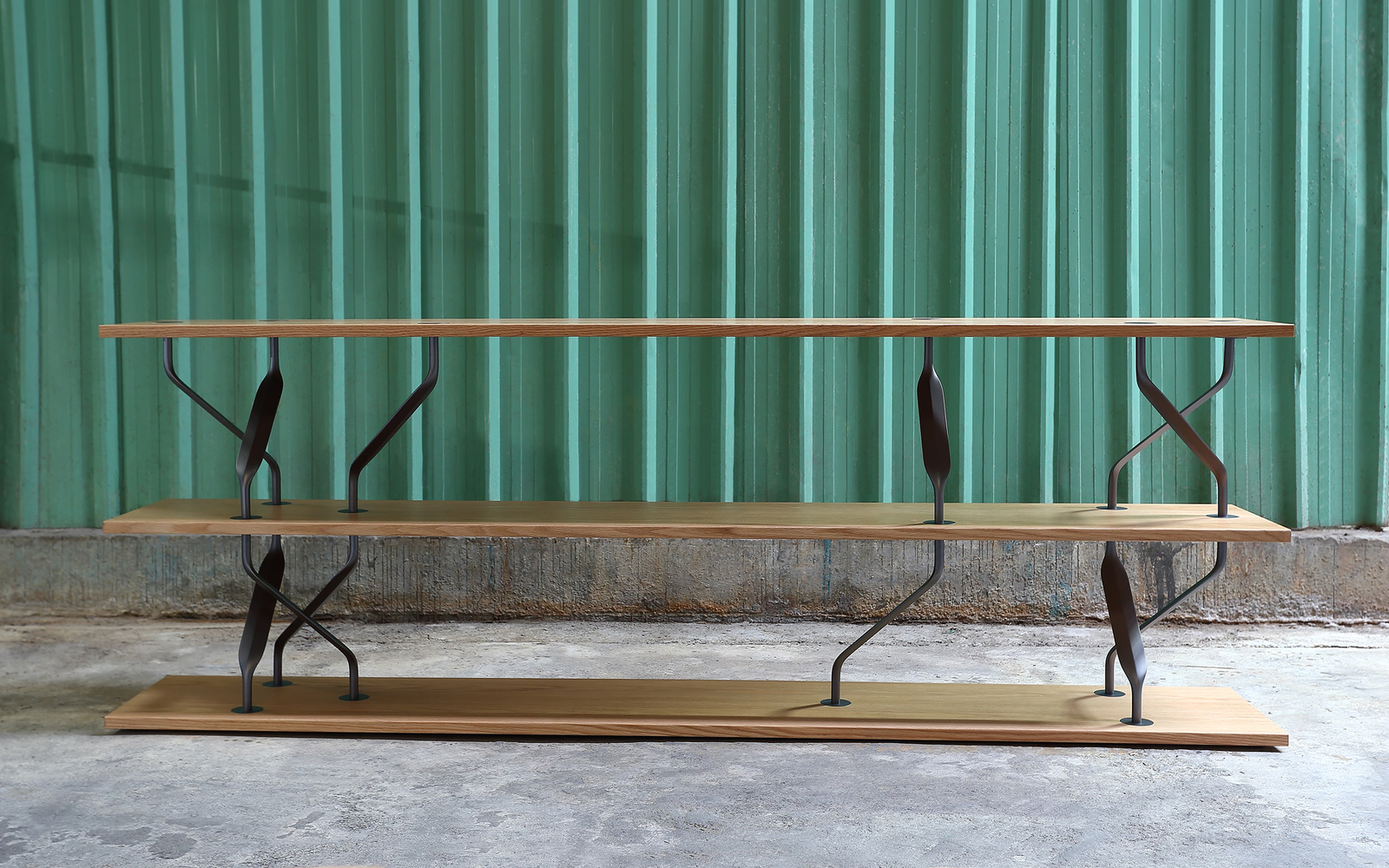
“Isn’t this so my kind of thing?” said Monica Khemsurov, rising from a padded leather sofa embedded within a detached steel-and-wood frame. It definitely was her kind of thing: Khemsurov, with fellow furniture maven Jill Singer, is the founder of online visual-culture clearinghouse Sight Unseen, and the faintly architectural X Ray couch by designer Alain Gilles—from which she’d just extracted herself—jived perfectly with her site’s sense of style, sort of after-hours late-modernist dreamscape in a Werner Fassbinder film.
The same could be said of the marble-disk dining table by American designer Jonah Takagi, or the 1930s repro mirror by Deco master J.E. Ruhlmann that accompanied it, all part of the booth for Parisian brand La Chance that opened on Wednesday as part of the Designjunction section of London’s sprawling design week. Finding one’s kind of thing there wasn’t easy: occupying two cavernous neo-classical buildings in Bloomsbury, Designjunction was an unusual mix of trade fair and designer showcase, with upstart furniture makers jockeying for place alongside well-known industry stalwarts.
In the latter category, Danish outfit Hay was given pride of place in a lower-floor space beneath a dramatic glassed-in dome. Under the direction of design veteran Sebastian Wrong, the firm presented their new line Wrong by Hay, featuring lighting (Wrong’s Sinker pendants) and seating (svelte red stools by Leon Ransmeier) in tune with the company’s pared-down sensibility. Doubling as a coffee shop for weary fairgoers, the installation complemented the dark, romantic interior with countertops and display stands in a smooth cork laminate. “It’s actually used for gaskets in engine mounts,” explained Wrong, standing in the hazy afternoon light filtering down from the glazed canopy.
“One’s kind of thing” isn’t always the new-new thing. Another American design aficionado, historian and writer Paul Makovsky, had winged into London for a single afternoon to preside over the Designjunction stall of legendary interiors company Herman Miller. The display spotlighted the work of Ward Bennett, a heretofore neglected mid-century master whose classic Sled and Scissor chairs are enjoying renewed popularity. “He designed an apartment for Jann Wenner, the founder of Rolling Stone,” explained Makovsky, who’s preparing an in-depth study of Bennett.
But perhaps the best thing about the London Design Festival (as indeed about London itself) is if one’s thing happens to be the collision of both old and new. At Designjunction, commercial plastics manufacturer Curver was launching themselves onto the design market with their new Knit line of pots, bags and more, woven into intricate patterns in an array of pastel shades that “really bring it to life and make it contemporary,” as Curver design consultant Kate Franklin put it. Meanwhile, only a couple blocks away, a small, thoughtful show on pop-urban detritus sponsored by local team Workshop for Potential Design took up one of the old breakfast rooms in the Sir John Soane’s Museum, the labyrinthine home of England’s most famous turn-of-the-19th-century architect. Going from space-age materials to neo-gothic stonework produces a pleasantly disorienting effect—accentuated, as it always is here, when the shows close down and the design crowds heads “down the pub.”